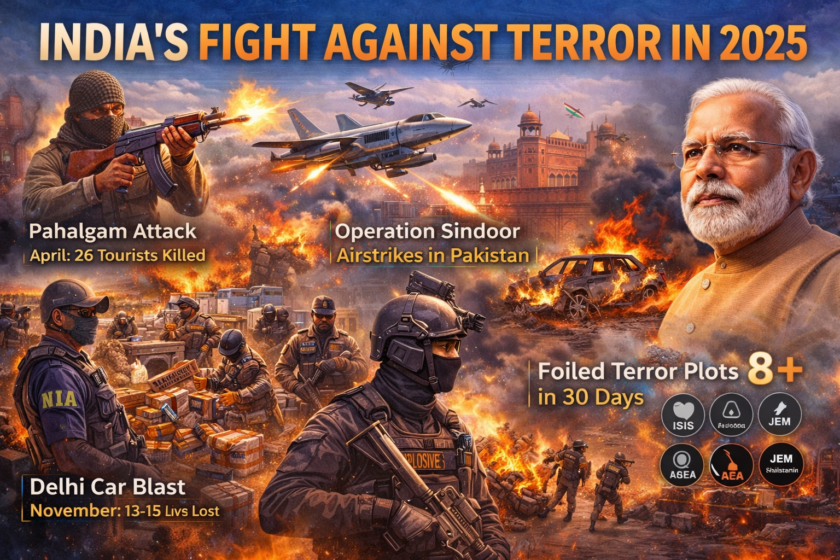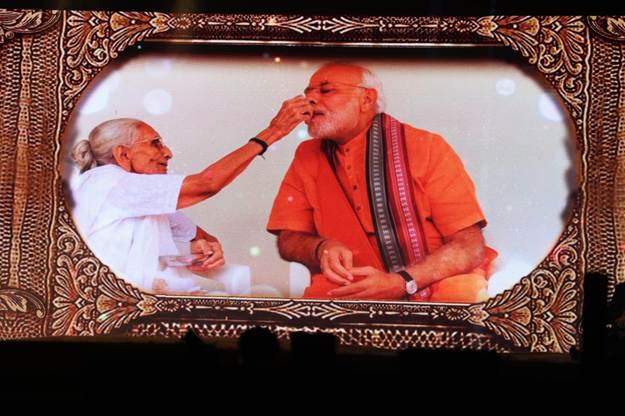New Delhi: In a media landscape increasingly driven by algorithms, profit margins, and elite narratives, voices from the margins are often drowned out. Neha Dixit’s new book, the Many Lives of Syeda X brings one such voice — that of Syeda, a Muslim migrant woman from Banaras who moved to Delhi after the 1992 Babri Masjid riots — into sharp focus. For over three decades, Syeda has toiled invisibly, crafting the very objects that populate our homes and lives — from tea strainers and Diwali décor to bulbs and stationery — without ever becoming part of the national conversation.
Through Syeda’s lived reality, Dixit unflinchingly exposes the intersecting oppression of gender, class, and religion, while holding a mirror to the systemic apathy of our institutions and media. The book, rooted in nearly a decade of reporting, sheds light on the brutal economic vulnerability of India’s home-based female labour force and the crushing invisibility of working-class Muslims. It is a searing portrait of survival, quiet resilience, and institutional neglect — a story both urgent and overdue.
In an age of billion-dollar weddings and viral fashion moments, Syeda’s life forces us to confront who gets heard, who gets ignored, and why it’s time we rewrote the narrative.
Do tell us a little about your journey and why did you feel it fit to write this book?
I have a been a journalist for 18 years. I was clearly and emphatically told that all journalism is in public interest. If the most socio-economic margins in the society is not the centre of public discourse, that discourse itself is flawed. In last decade or so, we have seen the growing corporatisation of media in India. This means that any journalism or even communication is the public domain is being essentially driven by profits, markets and the interests of those who are big consumers and materially rich. When there is a storm or floods in the country, news organisations report about the flight delays, not the slum or farms that are adversely affected and concern the large majority of the country. When news organisations start reporting according to the keywords trending on internet instead of what is actually affecting people on the ground, everyone interested in the progress of the country should be alarmed. My book was borne out of this frustration in the Indian public discourse which is not just polarised and straightjacketed but also so linear, cardboard-ish and devoid of any complex realities of people’s realities.
I wrote this book because people who run this country, who keep it going are absent from this public discourse because of their gender, class, caste, religion and geographies. Syeda is one among the million women who not just oils the manufacturing sector of this country but significantly contributes to the GDP of this country and its growth. Despite being an essential part of Indian national capital, Delhi, we never hear about her or people like her. As a journalist, I wrote about her life and those like her because her story is the story of millions of Indians in current times that we have invisiblised.
How do you portray the intersection of gender, class, and religion through the life of Syeda X?
Syeda is a migrant woman from Banaras who moved to Delhi in 1995. She was a weaver and her loom was burnt down in the riots after the Babri Mosque demolition in Ayodhya in 1992.
In India most women are employed in the agricultural sector. After that, most women do home based work, which is called piece rate work. Most manufacturing in India depends on home based workers who are paid per 12 dozen pieces they prepare instead of giving them time based wages. Women who are desperate for work because of lack of infrastructure support like public transport, childcare, decent and safe workspace, are forced to take up this work for abysmal rates. This cheap female labour economy subsidises multinational corporations and domestic markets and increases their profit margins.
Since Syeda moved to Delhi, in thirty years, she did 50 jobs but never managed to make more than one fifth of the daily wage. She made everything essential for a common person’s survival: tea strainers, bulbs, festival goodies, stationary, sports item, food items, hardware and what not. Yet, why do we not hear about her in our news, books, movies, ott series, fm radio or podcasts.
As a migrant woman, who had to give up not just her hometown because of religious sectarianism but also her traditional family occupation of weaving, and live as an urban poor person with her family, in the periphery of national capital, what is her life and that of her family. Her daughter who works in the mall as a bathroom attendant, her husband who is a rickshaw driver now but a master weaver earlier, her two sons who are repeatedly penalised because of their religion and poverty, all of them when studied together tell us the plight of how poor people are constantly pushed against the wall for their gender, caste, religion and class but yet never become a priority of the political classes or our media.
What does the book reveal about the economic vulnerability faced by migrant workers like Syeda in urban India?
Through the reporting of the book that took nine years, one realised that in contemporary India, all citizens are pretty much on their own, infact left to watch their own back and survive instead of having any state support or the possibility of any support system. For example, since there is no clean, free drinking water, people buy water filter. Those who have no electricity supply or face frequent power outages, they try to buy inverter, generator or access power back up. Our public hospitals and affordable healthcare is crumbling so everyone hopes to be able to consult and get treated in private healthcare sector. Our public schools and universities are in a crisis so those who can afford go to private schools and universities. Basically, there is no hope from the state to fix the system and so no one wants to be involved to fix it too. Everyone is forced to think of making their own lives better by escaping the system and buying the basics.
In such a scenario, when Syeda’s son meets an accident, she has no money and takes loan from a private contractor on a higher interest rate. According to many reports, many workers like her can slip to acute poverty within a week of illness because of medical expense.
Similarly, when demonetisation is declared in India, her daughter Reshma notices how at home her mother and many women who are home based workers like her are struggling to make ends meet, not able to cook beyond one meal a day while the rich are buying things left-right and centre to expend the cash they have.
This wide economic disparity between the rich and poor in India right now has been as much as it was in the colonial times. But this again is not part of public consciousness in India. In fact, Indians with any resources not just have a disdain and apathy for the poor but they actively hate the poor which apparent in so many episodes in the book.
In what ways does Syeda’s story highlight the invisibility of working-class labor in the larger socio-political narrative of India?
In Syeda’s thirty years in Delhi too, she has been continuously eroded by poor work conditions and abysmal wages. Even when she protested as an almond cleaning worker, for better wages and work conditions, it was not reported by the media or taken up by political parties.
In fact, in the last year, there have been several protests by workers in India. Amazon warehouse workers forced to work in 50 degree temperature under tin shades. Maruti workers demanded proper employment and wages. Blinkit and UrbanClap workers have demanded accountability for abrupt blocking of their work id. Ola electric scooter workers demanded better response for their faulty vehicles. BlueSmart drivers are protesting for abrupt termination of their services. Not just this, during Covid, UP government suspended labour laws for three years! But none of these stories become national issues. But MetGala dresses, and weddings of billionaires are endless talk of the town.
All of these protests and the lack of response are an extension of the kind of abysmal labour conditions Syeda has lived through in the past three decades.
How do episodes like the demolition of the Babri Masjid and the 2020 Delhi riots shape the trajectory of Syeda’s life?
Politicisation of religion is not good for people, governments, states, global politics and societies as a whole. When events like Babri Mosque demolition and Delhi riots happen at the behest of political parties hungry for votes and power, poor people across religions get affected adversely. Syeda not only lost her loom but her family was also targeted for being a Muslim. This seeds discord, distrust and creates disharmony in the society that may take lifetimes to fix. Additionally, her livelihood is affected, destroys her life savings and she is forced to rebuild her life again without resources and security of a local community. This cyclical nature repeats itself again after 25 years in her life. Both these events have led to political gains for religious supremacists and broken the fabric of Indian society. Syeda and her family, who are anyway on the socio-economic margins are doubly penalised because of being from a religious minority. It affects her work prospects and forces her to merely survive and stay safe instead of hoping for basic fundamental rights and safety as an Indian citizen.
What role does resilience play in Syeda’s life, and how is it portrayed in the book?
Resilience does not come from an external space. It germinates from the effort to survive, to live through that particular day. Hope and resilience are the tools that push Syeda and her family to stay alive since they have no other resources. And that is true for most people who are on the margins.
Everyone is doing something in Syeda’s vicinity. Women are making pressure cooker parts one day and two weeks later making marigold garlands and then a month later making door hinges. No one teaches them how to make these particular things but the need to buy grocery and milk for that day for their children is pushing them to learn quickly and survive. Reshma, who like the daughters of many home based workers like Syeda, grew up assisting her mother in making 12 dozen pieces of things to earn for the family. When she grows up, she decides not to do that life. So, unlike her brothers, she finishes school, enrols for college and takes up a job in a mall to see better days. Everyone on the margins is trying to do their best to escape their current circumstances and guess that’s what resilience is. To do your best to escape the present in the hope that you will see that day one day.
How does the book use Syeda’s experience to reflect the systemic discrimination faced by Muslim communities in India?
Throughout her life, Syeda faces targeted violence as a Muslim. Her loom is burnt down after the demolition of Babri Mosque. Her husband, Akmal, is falsely accused, detained, faces police torture. When she moves to Delhi, her sons, Shazeb and Salman are repeatedly picked up by the police on false charges or scrutiny. This speaks to the NCRB data, that suggests that the proportion of undertrial Muslims in Indian prisons is disproportionately higher than their actual population in India. Even during the Delhi riots, she witnesses how Muslim business enterprises are attacked and burnt down. Everywhere she goes, her concerns are the same as any Indian poor, migrant worker but her troubles also increase multifold because she is a Muslim in contemporary India.
What significance do the many small jobs that Syeda takes on have in understanding urban survival mechanisms?
Everything that we use in daily life, food, stationary, hardware, plastic, festival goodies, helmets, cars, doors, windows, electronic items, clothes, sports material etc is made by the cheap female labour economy that Syeda is part of. We get these things at a cheaper rate because people like Syeda are paid less. This is the new reality of the international and domestic production chain. Everyone in the system is aware of it including the government but labour rights have such a low place in the public discourse that this exploitative cycle continues and no one is fixing it. In the meanwhile, Syeda and many other women have no choice but to take this lowly paid work because as an urban poor migrant woman, this is the only work available to her and many women like her. There is no organised, ethical machinery that provides livelihood options to poor women in cities. That is a major cause of concerns in times where gig economy and lack of social security is constantly pushing people into acute poverty.

How do you incorporate the voices of other characters — such as the rickshaw driver, the doctor, or the gau rakshak — to deepen the reader’s understanding of urban India’s complexities?
These are people around us, all the time. A doctor could be part of the big pharma racket or corporate medical sector who is only inclined to make money instead of treating people medically. We all know of such bloodsucking health systems. Similarly, a gau rakshak could be a business owner or an unemployed young person who only finds these outlets to experience self-worth in an India that increasingly celebrates hate, bigotry and violence. They may come across as decent people but there is something that the current atmosphere of hate speeches enables and allows crime. In the book, one has presented these people who reflect the political atmosphere of the times we are living in.
How is the concept of “home” and displacement explored through Syeda’s multiple dislocations over the decades?
Syeda is forced to leave her hometown because of lack of livelihood options and the rising sectarian tensions. When she moved to central Delhi, as she was settling down, a Supreme Court judgement to control Delhi pollution shut down her place of employment and she was thrown to the periphery. In a few years, she is again forced to move to another part of Delhi till her house is burnt down in Delhi riots. It indicates how the lives of the poor are not just considered disposable but also they can never be truly at ‘home’ because of the systemic bias against the poor in India which increases if you are from a particular caste or religion.
Why might this book be considered a crucial document for understanding the realities of ‘New India’?
That’s for the reader to decide. I have tried my best to report what I saw the reality of urban poor people in contemporary India. How they battle gender, caste, religious biases on the ground. How they live in small means without support and not even spoken about among the popular conversations. How generations battle stereotypes and yet continue to strive for the better.
How does your background as an investigative journalist influence the style and depth of this narrative?
Journalism is essentially investigative in nature. In the last 18 years, I have had the opportunity to not just report on one thing but explore the possibility of seeing linkages between diverse things. The connection between caste and healthcare, or gender and urban planning or labour with urban poverty. It helped me to see the full picture of a country or a region by looking at the numerous intersections all reporting and events have.
Lastly in your experience in writing this book your key takeaways?
All journalists should write books. There is nothing more telling than reporting from the ground and putting the voices of people on the forefront.
About Neha Dixit – Independent Investigative Journalist | Author
Neha Dixit is an award-winning independent journalist based in New Delhi, India. Her work focuses on the intersection of politics, gender, and social justice in South Asia, with a strong emphasis on long-form investigative and narrative reporting.
Over the past decade, she has reported for leading national and international publications including Al Jazeera, The New York Times, The Washington Post, Outlook, Caravan, Smithsonian, Tehelka, India Today, Foreign Policy, and The Wire, among others.
Her debut non-fiction book, The Many Lives of Syeda X: The Story of an Unknown Indian was released on July 31, 2024 by Juggernaut Books in the Indian subcontinent.
Honors & Awards
-
Journalist of the Year, One Young World (2020)
-
International Press Freedom Award, Committee to Protect Journalists (2019)
-
Chameli Devi Jain Award for Outstanding Woman Journalist (2016)
-
Kurt Schork Award in International Journalism (2014)
-
Lorenzo Natali Prize for Journalism, Asia-Pacific (2011)
-
Multiple UNFPA-Laadli Media Awards for Gender Sensitivity
-
PII-ICRC Award for Best Humanitarian Report (2015)
-
Trust Women Honorary Journalist of the Year, Thomson Reuters Foundation (2013)
-
Best Investigative Feature, News Television Awards (2010–2011)
Fellowships
-
PEN America World Press Freedom Fellowship (2019)
-
Commonwealth Human Rights Initiative Fellowship (2018)
-
New India Fellowship (2017)
-
ICFJ-Knight Fellowship on Gender Journalism (2017)
-
World Press Institute Fellow (2012), covering the U.S. Presidential elections
Neha’s journalism is known for its rigor, empathy, and courage, especially in documenting the lives of those at the margins of visibility and power.





